
Diane Dweller, "Mom, Mania, and Me: Surviving and Changing a Volatile Relationship"
English | ISBN: 094474902X | 2017 | 234 pages | AZW3 | 410 KB
FINALIST Tucson Festival of Books Competition
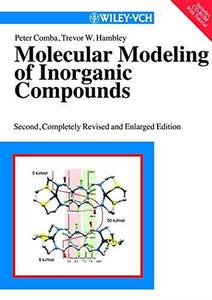
Molecular Modeling of Inorganic Compounds, Second Edition By Prof. Dr. Peter Comba, Prof. Dr. Trevor W. Hambley(auth.)
2001 | 322 Pages | ISBN: 3527299157 | PDF | 17 MB
In many branches of chemistry, Molecular Modeling is a well-established and powerful tool for the investigation of complex structures. The second completely revised and enlarged edition of this highly recognized book shows how this method can be successfully applied to inorganic and coordination compounds. The first part of the book gives a general introduction to Molecular Modeling, which will be of use for chemists in all areas. The second part discusses numerous carefully selected examples, chosen to illustrate the wide range of applicability of molecular modeling to metal complexes and the approaches being taken to dealing with some of the difficulties involved. While the general outline is similar to that of the first edition, many of the examples chosen for discussion reflect the changes of the past five years. In the third part, the reader learns how to apply Molecular Modeling to a new system and how to interpret the results. The accompanying software features 20 tutorial lessons based on examples from the literature and the book itself. The authors take special care to highlight possible pitfalls and offer advice on how to avoid them. Therefore, this book will be invaluable to everyone working in or entering the field. Content: Chapter 1 Introduction (pages 3-7): Chapter 2 Molecular Modeling Methods in Brief (pages 9-16): Chapter 3 Parameterization, Approximations and Limitations of Molecular Mechanics (pages 17-57): Chapter 4 Computation (pages 59-67): Chapter 5 The Multiple Minima Problem (pages 69-73): Chapter 6 Conclusions (pages 75-76): Chapter 7 Structural Aspects (pages 79-87): Chapter 8 Stereoselectivities (pages 89-102): Chapter 9 Metal Ion Selectivity (pages 103-118): Chapter 10 Spectroscopy (pages 119-139): Chapter 11 Electron Transfer (pages 141-148): Chapter 12 Electronic Effects (pages 149-159): Chapter 13 Bioinorganic Chemistry (pages 161-170): Chapter 14 Organometallics (pages 171-182): Chapter 15 Compounds with s?, p? and f?Block Elements (pages 183-189): Chapter 16 The Model, the Rules and the Pitfalls (pages 193-201): Chapter 17 Tutorial (pages 203-295):

Molecular Catenanes, Rotaxanes and Knots: A Journey Through the World of Molecular Topology By
1999 | 379 Pages | ISBN: 3527295720 | PDF | 14 MB
This journey through the fascinating world of molecular topology focuses on catenanes, rotaxanes and knots, their synthesis, properties, and applications and the theory of interlocking and interpenetrating molecules. Nearly one hundred years of progress have passed since Willstatter's speculative vision of a molecule consisting of two interlinked rings. But even today the synthesis of such structures are a challenge to the creativity of synthetic chemists. These molecules are not only of academic interest, since they occur naturally. In such molecules as DNA, knots and related topological features play a key role in biochemical processes. In addition, extensive research on the properties of polyrotaxanes and polycatenanes show potential applications as molecular magnets, wires or switches. Twelve international leading experts in the field present the broad and impressive spectrum of the topology of these molecules, from theoretical aspects and new pathways in synthesis to probing their properties. All researchers working in this interdisciplinary area, whether organic, inorganic or polymer chemists, as well as material scientists, will welcome this comprehensive and up-to-date work as an inspiring source for creative research ideas.Content: Chapter 1 Chemical Topology ? Statistical Musings (pages 1-6): E. WassennanChapter 2 A Knot Theoretic Approach to Molecular Chirality (pages 7-35): Erica FlapanChapter 3 Soft and Hard Molecule?Based Magnets with a Fully Interlocked Three?Dimensional Structure (pages 37-55): Olivier Kahn, Lahcene Ouahab, Corine Mathoniere and Humberto O. StumpfChapter 4 Transition Metal?Incorporating Catenanes (pages 57-76): Makoto FujitaChapter 5 Catenane and Rotaxane Motifs in Interpenetrating and Self?Penetrating Coordination Polymers (pages 77-106): Stuart R. Batten and Richard RobsonChapter 6 Molecular Knots ? From Early Attempts to High?Yield Template Syntheses (pages 107-142): Christiane Dietrich?Buchecker, Gwenael Rapenne and Jean?Pierre SauvageChapter 7 Organic Template?Directed Syntheses of Catenanes, Rotaxanes, and Knots (pages 143-176): Francisco M. Raymo and J. Fraser StoddartChapter 8 Amide?Based Catenanes, Rotaxanes and Pretzelanes (pages 177-222): Christiane Heim, Dirk Udelhofen and Fritz VogtleChapter 9 Polymer Chains in Constraining Environments (pages 223-246): J. E. MarkChapter 10 Polycatenanes, Poly[2]catenanes, and Polymeric Catenanes (pages 247-276): Yves GeertsChapter 11 Polyrotaxanes ? Syntheses and Properties (pages 277-321): Caiguo Gong and Hany W. GibsonChapter 12 Synthetic DNA Topology (pages 323-356): Nadrian C. Seeman
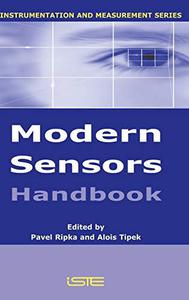
Modern Sensors Handbook By
2007 | 528 Pages | ISBN: 1905209665 | PDF | 7 MB
Modern sensors working on new principles and/or using new materials and technologies are more precise, faster, smaller, use less power and are cheaper. Given these advantages, it is vitally important for system developers, system integrators and decision makers to be familiar with the principles and properties of the new sensor types in order to make a qualified decision about which sensor type to use in which system and what behavior may be expected. This type of information is very difficult to acquire from existing sources, a situation this book aims to address by providing detailed coverage on this topic. In keeping with its practical theme, the discussion concentrates on sensor types used or having potential to be used in industrial applications.Content: Chapter 1 Pressure Sensors (pages 1-47): Andre Migeon and Anne?Elisabeth LenelChapter 2 Optical Sensors (pages 49-82): Stanislav Dado and Jan FischerChapter 3 Flow Sensors (pages 83-139): R. Meylaers, F. Peeters, M. Peetermans and L. IndesteegeChapter 4 Intelligent Sensors and Sensor Networks (pages 141-192): Jiri NovakChapter 5 Accelerometers and Inclinometers (pages 193-244): Andre Migeon and Anne?Elisabeth LenelChapter 6 Chemical Sensors and Biosensors (pages 245-303): Gillian McMahonChapter 7 Level, Position and Distance (pages 305-345): Stanislav Dado and G. HartungChapter 8 Temperature Sensors (pages 347-393): F. Peeters, M. Peetermans and L. IndesteegeChapter 9 Solid State Gyroscopes and Navigation (pages 395-432): Andre Migeon and Anne?Elisabeth LenelChapter 10 Magnetic Sensors (pages 433-475): S. Ripka and Pavel RipkaChapter 11 New Technologies and Materials (pages 477-511): A. Tipek, P. Ripka, E. Hulicius, A. Hospodkova and P. Neuzil
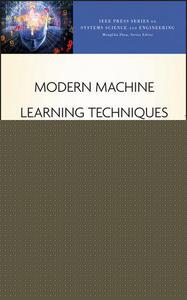
Modern Machine Learning Techniques and Their Applications in Cartoon Animation Research By Jun Yu, Dacheng Tao(auth.)
2013 | 204 Pages | ISBN: 1118115147 | PDF | 9 MB
The integration of machine learning techniques and cartoon animation research is fast becoming a hot topic. This book helps readers learn the latest machine learning techniques, including patch alignment framework; spectral clustering, graph cuts, and convex relaxation; ensemble manifold learning; multiple kernel learning; multiview subspace learning; and multiview distance metric learning. It then presents the applications of these modern machine learning techniques in cartoon animation research. With these techniques, users can efficiently utilize the cartoon materials to generate animations in areas such as virtual reality, video games, animation films, and sport simulationsContent: Chapter 1 Introduction (pages 1-61): Chapter 2 Modern Machine Learning Techniques (pages 63-104): Chapter 3 Animation Research: A Brief Introduction (pages 105-129): Chapter 4 Animation Research: Modern Techniques (pages 131-194):
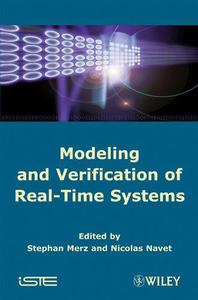
Modeling and Verification of Real-Time Systems: Formalisms and Software Tools By
2008 | 386 Pages | ISBN: 1848210132 | PDF | 5 MB
This title is devoted to presenting some of the most important concepts and techniques for describing real-time systems and analyzing their behavior in order to enable the designer to achieve guarantees of temporal correctness. Topics addressed include mathematical models of real-time systems and associated formal verification techniques such as model checking, probabilistic modeling and verification, programming and description languages, and validation approaches based on testing. With contributions from authors who are experts in their respective fields, this will provide the reader with the state of the art in formal verification of real-time systems and an overview of available software tools.Content: Chapter 1 Time Petri Nets - Analysis Methods and Verification with TINA (pages 19-49): Bernard Berthomieu, Florent Peres and Francois VernadatChapter 2 Validation of Reactive Systems by Means of Verification and Conformance Testing (pages 51-75): Camille Constant, Thierry Jeron, Herve Marchand and Vlad RusuChapter 3 An Introduction to Model Checking (pages 77-110): Stephan MerzChapter 4 Model Checking Timed Automata (pages 111-140): Patricia Bouyer and Francois LaroussinieChapter 5 Specification and Analysis of Asynchronous Systems using CADP (pages 141-169): Radu MateescuChapter 6 Synchronous Program Verification with Lustre/Lesar (pages 171-206): Pascal RaymondChapter 7 Synchronous Functional Programming with Lucid Synchrone (pages 207-247): Paul Caspi, Gregoire Hamon and Marc PouzetChapter 8 Verification of Real?Time Probabilistic Systems (pages 249-288): Marta Kwiatkowska, Gethin Norman, David Parker and Jeremy SprostonChapter 9 Verification of Probabilistic Systems Methods and Tools (pages 289-318): Serge Haddad and Patrice MoreauxChapter 10 Modeling and Verification of Real?Time Systems using the IF Toolset (pages 319-351): Marius Bozga, Susanne Graf, Laurent Mounier and Iulian OberChapter 11 Architecture Description Languages: An Introduction to the SAE AADL (pages 353-383): Anne?Marie Deplanche and Sebastien Faucou
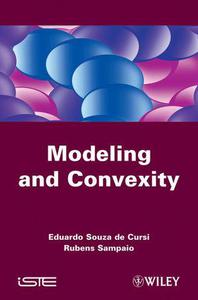
Modeling and Convexity By
2010 | 507 Pages | ISBN: 1848211775 | PDF | 6 MB
This reference book gives the reader a complete but comprehensive presentation of the foundations of convex analysis and presents applications to significant situations in engineering. The presentation of the theory is self-contained and the proof of all the essential results is given. The examples consider meaningful situations such as the modeling of curvilinear structures, the motion of a mass of people or the solidification of a material. Non convex situations are considered by means of relaxation methods and the connections between probability and convexity are explored and exploited in order to generate numerical algorithms.Content: Chapter 1 Curvilinear Continuous Media (pages 1-32): Eduardo Souza de Cursi, Rubens Sampaio and Piotr BreitkopfChapter 2 Unilateral System Dynamics (pages 33-52): Eduardo Souza de Cursi, Rubens Sampaio and Piotr BreitkopfChapter 3 A Simplified Model of Fusion/Solidification (pages 53-60): Eduardo Souza de Cursi, Rubens Sampaio and Piotr BreitkopfChapter 4 Minimization of a Non?Convex Function (pages 61-68): Eduardo Souza de Cursi, Rubens Sampaio and Piotr BreitkopfChapter 5 Simple Models of Plasticity (pages 69-76): Eduardo Souza de Cursi, Rubens Sampaio and Piotr BreitkopfChapter 6 Elements of Set Theory (pages 77-96): Eduardo Souza de Cursi, Rubens Sampaio and Piotr BreitkopfChapter 7 Real Hilbert Spaces (pages 97-200): Eduardo Souza de Cursi, Rubens Sampaio and Piotr BreitkopfChapter 8 Convex Sets (pages 201-252): Eduardo Souza de Cursi, Rubens Sampaio and Piotr BreitkopfChapter 9 Functionals on a Hilbert Space (pages 253-360): Eduardo Souza de Cursi, Rubens Sampaio and Piotr BreitkopfChapter 10 Optimization (pages 361-420): Eduardo Souza de Cursi, Rubens Sampaio and Piotr BreitkopfChapter 11 Variational Problems (pages 421-486): Eduardo Souza de Cursi, Rubens Sampaio and Piotr Breitkopf

Mindful Medicine: 40 Simple Practices to Help Healthcare Professionals Heal Burnout and Reconnect to Purpose by Jan Chozen Bays
English | July 26th, 2022 | ISBN: 1645470520 | 240 pages | True EPUB | 0.80 MB
Simple mindfulness practices to help health care professionals of all kinds reconnect with themselves and their patients, find joy, and build resilience.

Miguel Barclay, "Miguel Barclay's Super Easy One Pound Meals"
English | ISBN: 1472254392 | 2018 | 208 pages | AZW3 | 13 MB
Simple ingredients + 1 pan = stress-free meals.

Microsystem Engineering of Lab-on-a-Chip Devices By
2004 | 261 Pages | ISBN: 3527307338 | PDF | 4 MB
Written on a non-specialist level by an interdisciplinary team of chemists, biologists and engineers from one of Europe's leading centres for microsystem research, the Danish Mikroelektronik Centret (MIC), this is a concise practical introduction to the subject. As such, the book is the first to focus on analytical applications, providing life and analytical scientists, biotechnologists and pharmaceutists with an understanding of the principles behind the design and manufacture of chemical and biochemical microsystems. The text is backed by a chapter devoted to troubleshooting as well as a glossary. Content: Chapter 1 Introduction (pages 1-7): Prof. Pieter TellemanChapter 2 Clean Rooms (pages 9-11): Daria Petersen and Prof. Pieter TellemanChapter 3 Microfluidics - Theoretical Aspects (pages 13-37): Dr. Jorg P. Kutter and Henning KlankChapter 4 Microfluidics - Components (pages 39-77): Dr. Jorg P. Kutter, Klaus Bo Mogensen, Henning Klank and Dr. Oliver GeschkeChapter 5 Simulations in Microfluidics (pages 79-116): Goran Goranovic and Henrik BruusChapter 6 Silicon and Cleanroom Processing (pages 117-160): Anders Michael Jorgensen and Klaus Bo MogensenChapter 7 Glass Micromachining (pages 161-168): Daria Petersen, Klaus Bo Mogensen and Henning KlankChapter 8 Polymer Micromachining (pages 169-181): Henning KlankChapter 9 Packaging of Microsystems (pages 183-212): Gerardo PerozzielloChapter 10 Analytical Chemistry on Microsystems (pages 213-249): Dr. Jorg P. Kutter and Dr. Oliver Geschke


